Dell PowerEdge R570 review: An incredibly versatile Xeon 6 rack server
With its impressive Xeon 6-core count and big storage features, the PowerEdge R570 is a cost-effective and energy-efficient alternative to expensive 2P rack servers
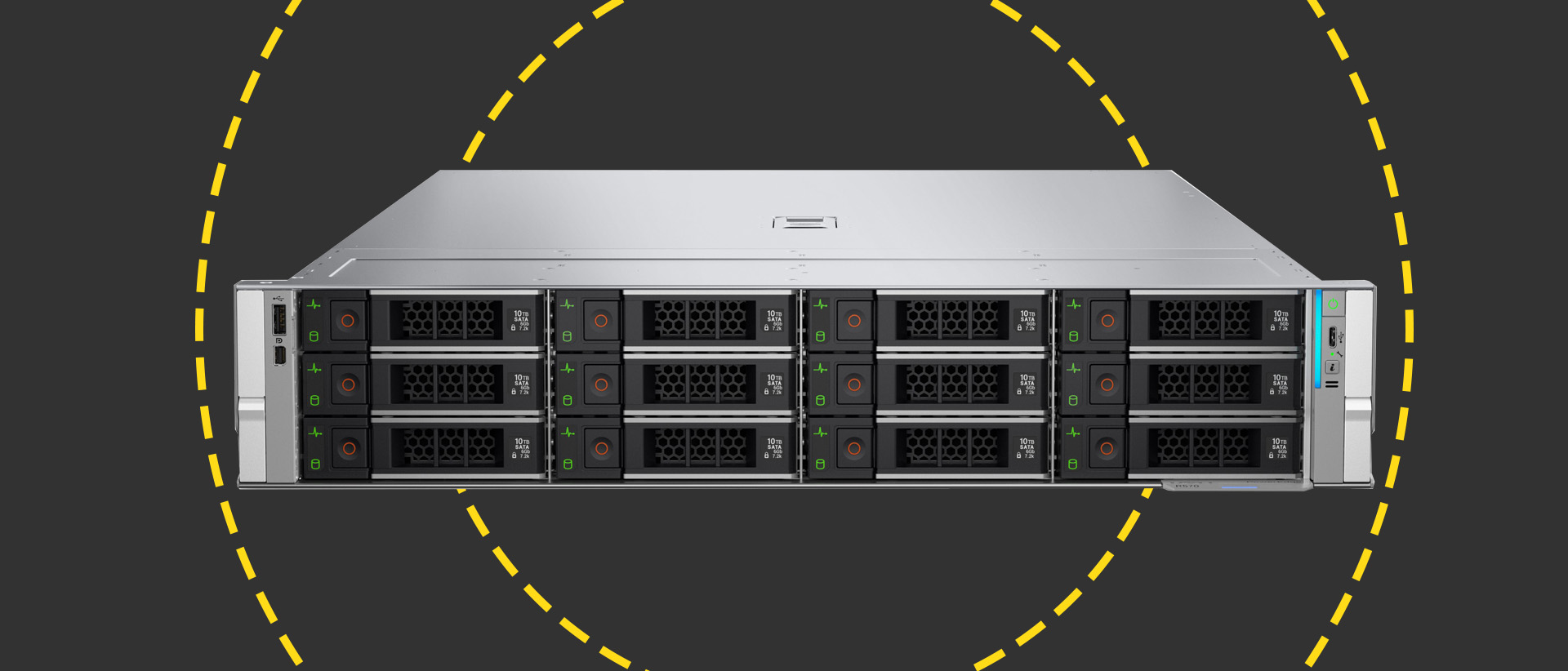
-
+
Smart chassis design
-
+
Impressive core density
-
+
High memory capacity
-
+
Wealth of storage options
-
+
iDRAC10 remote management
-
-
None

Intel's huge Xeon 6 family takes the fight right to AMD's doorstep, and Dell's latest Gen17 PowerEdge servers aim to take full advantage of these super-massive CPUs. The new PowerEdge range currently comprises four models, and in this hands-on review, we bring you a first look at the PowerEdge R570.
Targeting medium to large workloads, the R570 offers a balanced mix of features and capacity. Its single-socket (1P) design will appeal to businesses seeking an affordable, energy-efficient solution ideally suited to virtualisation, medium VM density, or VDI and SDS (software-defined storage) node duties.
CPU choices are extensive as the R570 has room for an Xeon 6 E-Core up to 144 cores or P-Core up to 86 cores, with the latter supporting up to 4TB of DDR5 memory. The R570 offers plenty of GPU options and introduces Dell's new iDRAC10 remote management controller, while its 2U high chassis offers an impressive expansion potential and has a lot to say in the storage department with support for up to 32 EDSFF E3.S NVMe SSDs.
Dell PowerEdge R570 review: System design
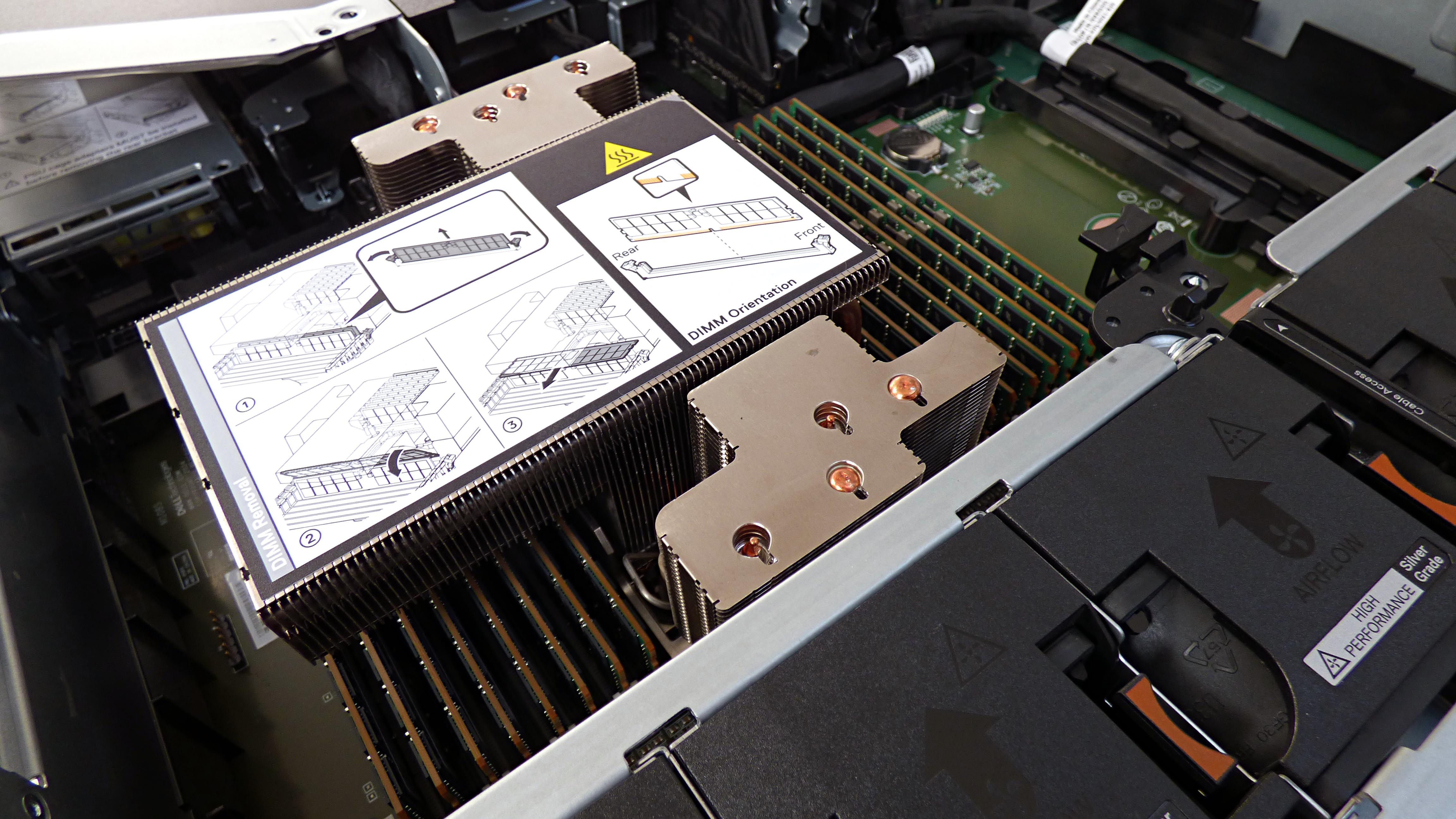
A new chassis design makes the R570 highly versatile as it's available in cold-aisle and hot-aisle configurations. The former option reduces the maximum number of EDSFF SSD bays to sixteen but will appeal to support staff as it presents all expansion slots and I/O ports at the front for easier maintenance and servicing access.
We were supplied with the hot-aisle chassis, and cracking its lid reveals a remarkably tidy interior affording easy access to all key components. The server employs a T-shaped motherboard, which allows the PSUs to be placed on each side of the chassis to improve air flow throughout and ensure there are no hot spots.
Our system was blessed with a mighty 86-core 2GHz Xeon 6787P CPU sitting underneath a very large passive heatsink and flanked on each side by eight DIMM slots. As we had a P-Core CPU, memory can be expanded up to 4TB, whereas an E-Core CPU reduces this to 1TB.
Chassis cooling is handled by a bank of up to six hot-plug fan modules in front of the motherboard. Dell has clearly done a fine job with air flow, as even with the 86-core CPU and 1.5TB of memory in residence, our system only required five HPR Silver fans – more powerful models will need up to six HPR Gold fans.
Expansion options are impressive, as further back are a set of stacked risers offering up to four PCIe Gen5 slots, while underneath are two OCP 3 Gen5 slots. GPU options are equally good, as there's room for up to four 75W single-width Nvidia cards with support for three 400W double-width cards on the future feature list, although you'll need to be mindful of Dell's thermal restrictions when fitting these.
Dell PowerEdge R570 review: Storage abundance
The server gets top marks for storage features as the chassis supports up to 12 LFF and 24 SFF SAS/SATA devices, with the hot-aisle chassis having space for 32 EDSFF E3.S Gen5 NVMe SSDs. Our system had two 8-bay SFF front cages with room for a third 8-bay cage in the middle, and if you're prepared to lose the right-hand expansion riser, you can add a four-bay E3.S SSD cage at the rear.
The R570 won't be supporting the next-gen PERC 13 controllers, but RAID options are still plentiful with our system sporting Dell's 'value performance' PERC 12 H365i Front (fPERC) adapter, which nestles in a dedicated slot behind the drive backplane. It supports SAS4, SATA, and NVMe devices but lacks cache memory, whereas the 'premium performance' H965i card includes 8GB of DDR4 cache memory. If you want to expand storage outside the box, Dell offers the HBA 465e and H965e external adapter cards.
Dell's BOSS-N1 DC-MHS (data center modular hardware system) adapter is supported, and in our system, it was fitted in a slot at the rear – in a cold-aisle chassis, it can be presented at the front for easier access. The card provides dual hot-plug M.2 NVMe SSD slots with a choice of two 480GB or 960GB sticks, and we used the latter to create a mirrored array and deploy Windows Server 2025 to it.
Dell PowerEdge R570 review: Remote management
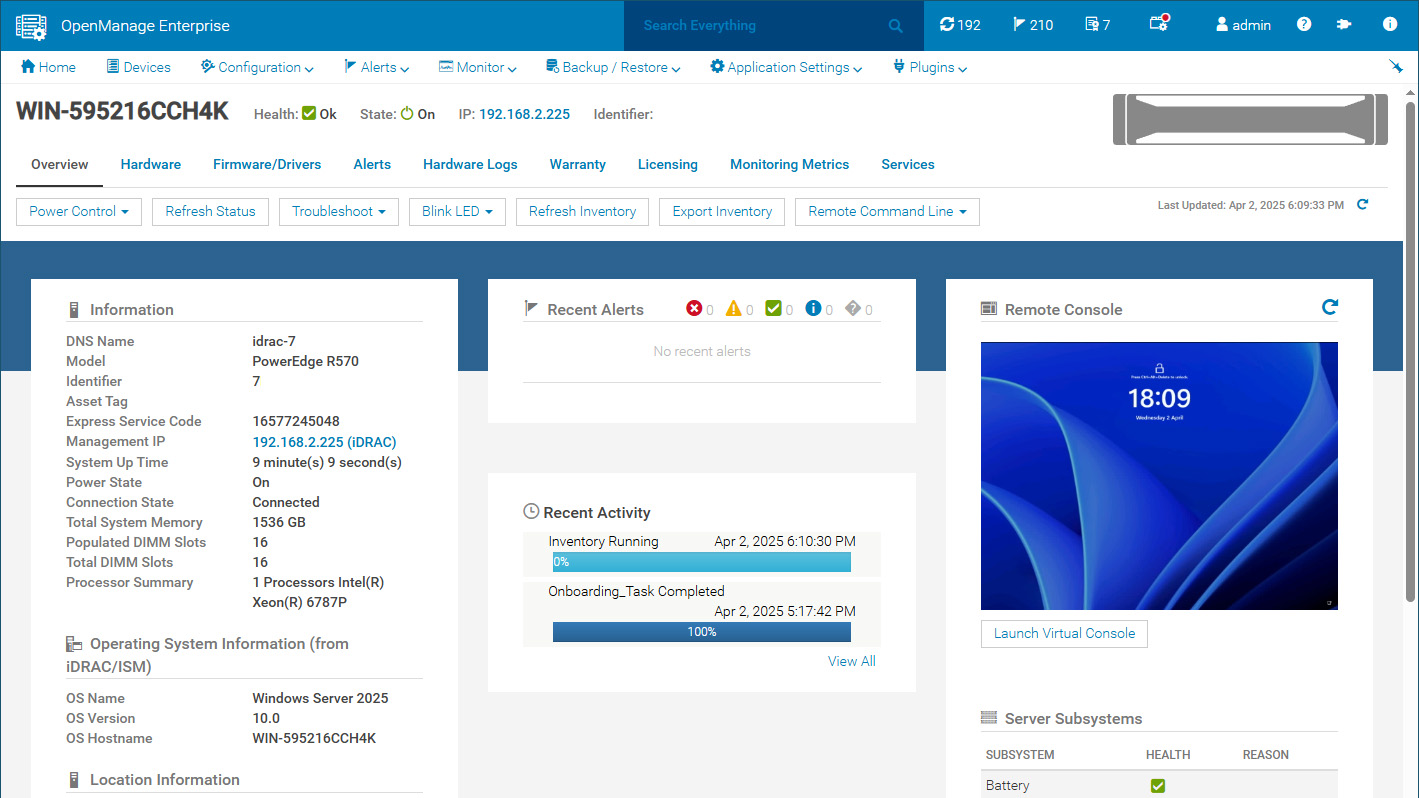
Dell's iDRAC is a standard setter for remote management, and the R570 introduces the new iDRAC10, which has a sharp focus on security. New features include a dedicated security processor with a cyber-resilient architecture, MFA (multi-factor authentication), integrated Root-of-Trust (RoT) encryption, and device-level attestation using stronger algorithms to verify the integrity of all hardware components during the secure boot phase.
A major hardware change is that whereas previous PowerEdge generations have the iDRAC controllers embedded on their motherboards, the iDRAC10 is now deployed as a DC-SCM (datacenter-ready secure control module). The DC-SCM moves all server management and security functions to a dedicated OCP-compliant edge-connected board, allowing Dell to use a standard form-factor across the entire Gen17 range and develop these functions independently of the server.
Plenty more management services are available with Dell's OpenManage Enterprise (OME) software, providing discovery, monitoring, and remote control for all its servers. We run OME in the lab as a Hyper-V VM and, after updating it to version 4.3.2, could import the R570's iDRAC10 into its console.
Adding an OME Enterprise Advanced licence to the server's iDRAC10 enables the Power Manager plug-in, which presents global power consumption and thermal stats for all monitored servers. For individual servers, you can view graphs showing CPU, storage, memory, and fan power consumption plus airflow in CFM (cubic feet per minute) and enforce per-rack power cap and thermal event-based policies.
With a valid support contract, you can integrate OME with Dell's APEX AIOps Observability cloud hosted platform. OME functions as a collector for AIOps, sending telemetry and alert logs to it every five minutes, and you can use the cloud portal to keep a close eye on your entire Dell infrastructure, view PowerEdge server status and system performance, and use the Cybersecurity feature to monitor their security posture.
Dell PowerEdge R570 review: Is it worth it?
The PowerEdge R570 is a highly versatile 1P, 2U rack server, and with Intel's Xeon 6 CPU at the helm, is a great choice for businesses with big virtualisation and storage plans that want to avoid the expense of a 2P server. Build quality is excellent, it offers a wide range of storage configurations with plenty of room to grow, and the new iDRAC10 delivers outstanding remote server monitoring and management services.
Dell PowerEdge R570 specifications
Chassis | 2U rack | Row 0 - Cell 2 |
CPU | 86-core 2GHz Intel Xeon 6787P | Row 1 - Cell 2 |
Memory | 1.5TB 5,200MT/s DDR5 (max 4TB) | Row 2 - Cell 2 |
Storage bays | 16 x hot-swap SFF (max. 24) | Row 3 - Cell 2 |
RAID | Dell PERC H365i Front | Row 4 - Cell 2 |
Storage provided | 8 x 1.92TB SATA SFF SSDs | Row 5 - Cell 2 |
Other Storage | Dell BOSS-N1 DC-MHS with 2 x 960GB M.2 NVMe SSDs | Row 6 - Cell 2 |
Network | Broadcom BCM57508 dual 100GbE OCP 3 | Row 7 - Cell 2 |
Expansion | 4 x PCIe Gen5 slots, 2 x OCP 3 Gen5 slots | Row 8 - Cell 2 |
Power | 2 x 1,100W Platinum hot-plug PSUs | Row 9 - Cell 2 |
Management | Dell iDRAC10 DC-SCM Enterprise | Row 10 - Cell 2 |
Warranty | 3Yr Basic On-Site NBD | Row 11 - Cell 2 |
Get the ITPro daily newsletter
Sign up today and you will receive a free copy of our Future Focus 2025 report - the leading guidance on AI, cybersecurity and other IT challenges as per 700+ senior executives
Dave is an IT consultant and freelance journalist specialising in hands-on reviews of computer networking products covering all market sectors from small businesses to enterprises. Founder of Binary Testing Ltd – the UK’s premier independent network testing laboratory - Dave has over 45 years of experience in the IT industry.
Dave has produced many thousands of in-depth business networking product reviews from his lab which have been reproduced globally. Writing for ITPro and its sister title, PC Pro, he covers all areas of business IT infrastructure, including servers, storage, network security, data protection, cloud, infrastructure and services.
-
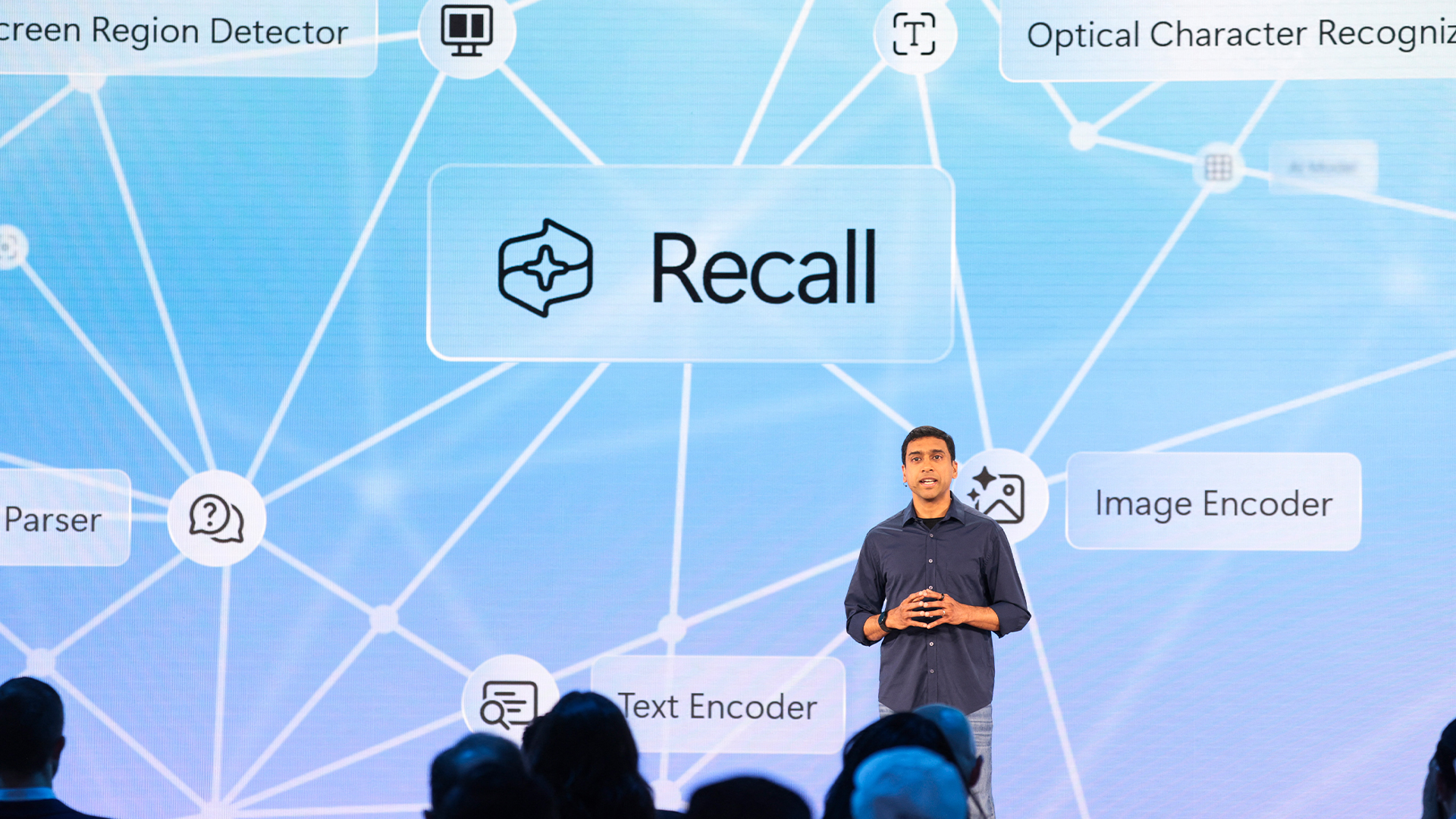 Third time lucky? Microsoft finally begins roll-out of controversial Recall feature
Third time lucky? Microsoft finally begins roll-out of controversial Recall featureNews The Windows Recall feature has been plagued by setbacks and backlash from security professionals
By Emma Woollacott Published
-
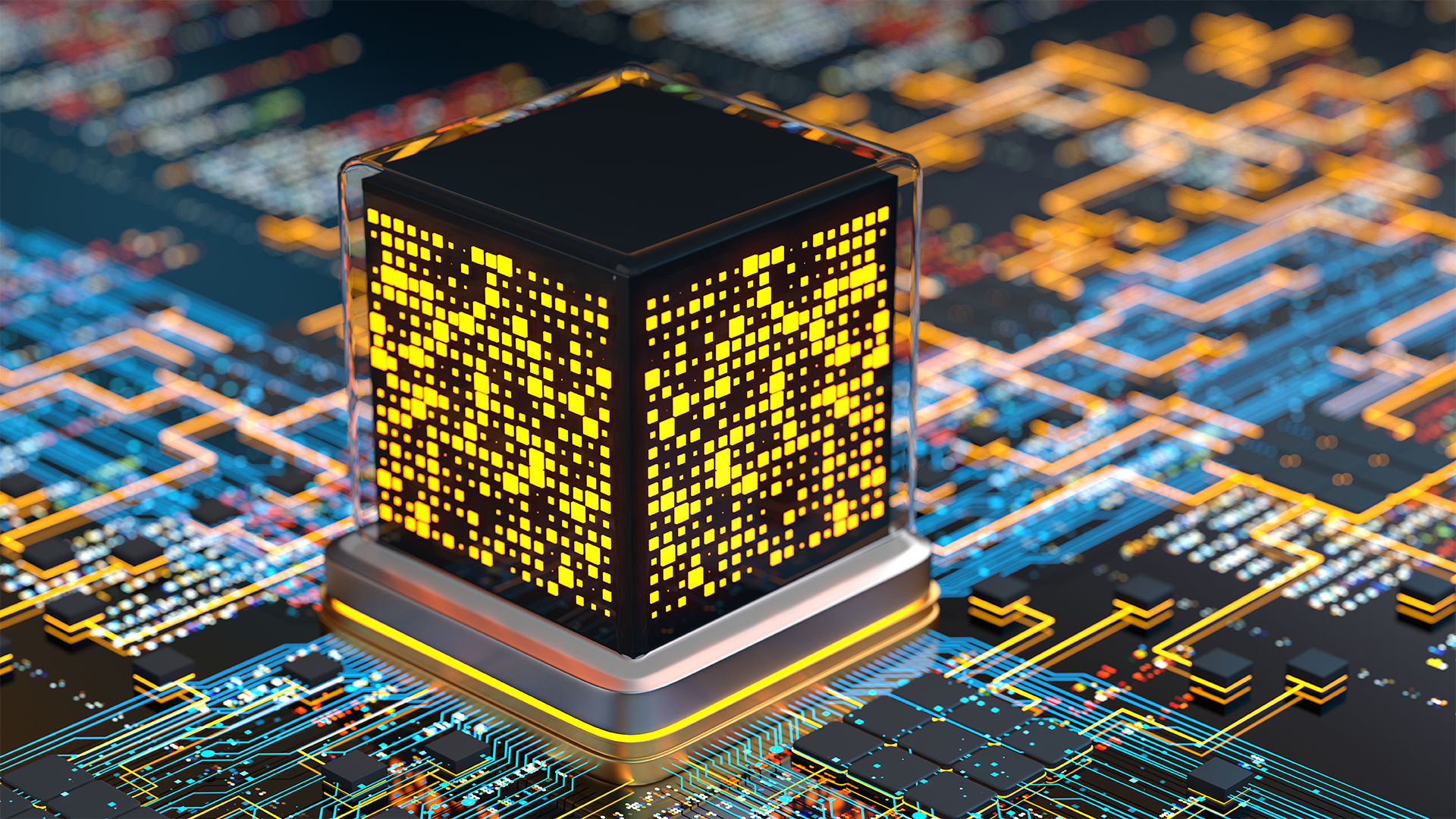 The UK government wants quantum technology out of the lab and in the hands of enterprises
The UK government wants quantum technology out of the lab and in the hands of enterprisesNews The UK government has unveiled plans to invest £121 million in quantum computing projects in an effort to drive real-world applications and adoption rates.
By Emma Woollacott Published
-
 Businesses are taking their eye off the ball with vulnerability patching
Businesses are taking their eye off the ball with vulnerability patchingNews Security leaders are overconfident in their organization’s security posture while allowing vulnerability patching to fall by the wayside.
By Jane McCallion Published